
- Homepage
- Author
- Aleister Crowley (10)
- Anonymous (12)
- C H Spurgeon (10)
- Charles Dickens (25)
- Edgar Allan Poe (14)
- God (22)
- John Dee (21)
- L. Frank Baum (10)
- Lewis Carroll (42)
- Louisa May Alcott (10)
- Maria Parloa (9)
- Mixed Authors (11)
- Multiple (8)
- Rudyard Kipling (28)
- Selected (8)
- Unknow (8)
- Unknown (33)
- Various (41)
- Walter Scott (9)
- William Shakespeare (28)
- ... (5101)
- Binding
- Cloth (54)
- Cloth & Boards (2)
- Disbound (3)
- Fine Binding (206)
- Good (8)
- Hardback (115)
- Hardcover (1147)
- Hardcover / (4)
- Hardcover W / Jacket (3)
- Leather (506)
- Leather / Hardcover (4)
- Manuscript (26)
- Manuscript, Unbound (2)
- Original Copy (99)
- Paperback (7)
- Softcover (3)
- Softcover, Wraps (87)
- Spiral (2)
- Vellum (55)
- Very Good (2)
- ... (3125)
- Language
- Publisher
- Antiquity (47)
- Cassell (7)
- Collector Books (13)
- David Mckay (6)
- Doubleday (9)
- Estes And Lauriat (9)
- Frank Leslie (6)
- Funk & Wagnalls (9)
- Grosset & Dunlap (22)
- Harper & Brothers (14)
- Lille, Blocquel (7)
- Macmillan (15)
- Macmillan And Co. (14)
- Passmore & Alabaster (6)
- Roberts Brothers (6)
- Selected (6)
- The Century Company (10)
- Transylvania Amira (7)
- Unknown (12)
- Various (24)
- ... (5211)
- Topic
- Year Printed
Rare antique leather book over 400 years old! 1587 Roberti Bel Latin
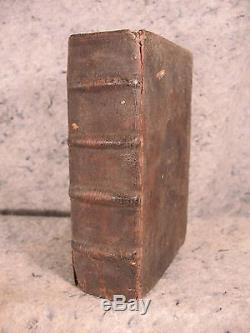



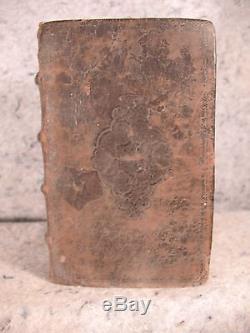
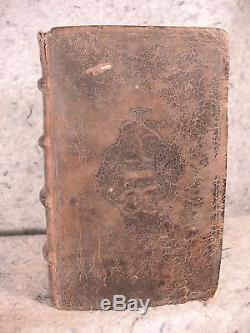
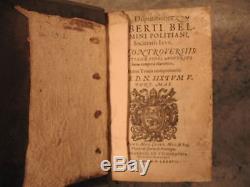
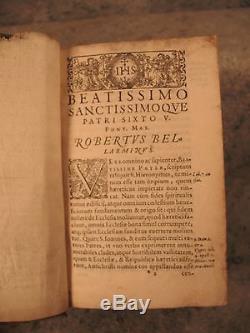
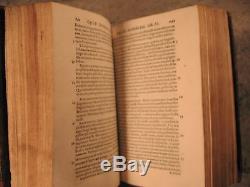
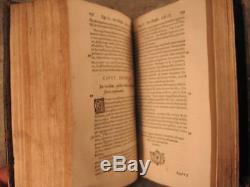
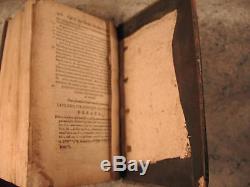


RARE ANTIQUE OLD LEATHER BOOK OVER 400 YEARS OLD! Leather binding with raised bands on spine. Disputationes ROBERTI BEL LARMINI POLITIANI, Societatis Iesv, DE CONTROVERSIIS Christianae Fidel Adversus. Publisher/printer Davidis Sartorii (Sartorius) M.
Disputationum DE CONTROVERSIIS, CHRISTIANEAE FIDEL, ADVERSUS NOSTRI. DE VERBO DEI LIBER PRIMVS CAPVT PRIMVM, & DE VERBI DEI INTERPRETATIONE.
PRIMI TOMI SECVNDA CONTROVER-SIA GENERALIS, DE CHRISTO CAPITE TOTVS ECCLESIAE, INDEX, LIBER PRIMVS DE CHRISTO PRAEFATIO. CAPTVT PRI-MVM, ETC 422 PAGES. BOOK MEASURES about 6 3/4" by 4 1/2" by 2 1/4 thick. Please look at photos to help determine condition.
4 October 1542 17 September 1621 was an Italian. He was one of the most important figures in the Counter-Reformation.
In 1930 and named a Doctor of the Church. Bellarmine was born at Montepulciano. The son of noble, albeit impoverished, parents, Vincenzo Bellarmino and his wife Cinzia Cervini, who was the sister of Pope Marcellus II. As a boy he knew Virgil.By heart and composed a number of poems in Italian. One of his hymns, on Mary Magdalene.
Is included in the Breviary. He entered the Roman novitiate in 1560, remaining in Rome three years. He then went to a Jesuit house at Mondovì. While at Mondovì, he came to the attention of Francesco Adorno. The local Jesuit Provincial Superior.
Who sent him to the University of Padua. Bellarmine's systematic study of theology. Began at Padua in 1567 and 1568, where his teachers were adherents of Thomism. In 1569 he was sent to finish it at the University of Leuven. There he was ordained, and obtained a reputation both as a professor and a preacher.
He was the first Jesuit to teach at the university, where the subject of his course was the Summa Theologica. His residence in Leuven lasted seven years.In poor health, in 1576 he made a journey to Italy. Here he remained, commissioned by Pope Gregory XIII.
To lecture on polemical theology. In the new Roman College. Now known as the Pontifical Gregorian University.
Until 1589, Bellarmine was occupied as professor of theology. After the murder in that year of Henry III of France.To negotiate with the Catholic League of France. And chose Bellarmine to accompany him as theologian. He was in the city during its siege by Henry of Navarre. The next pope, Clement VIII. Set great store by him.
He was made rector of the Roman College in 1592, examiner of bishops. In 1598, and cardinal in 1599.
Immediately after his appointment as Cardinal, Pope Clement made him a Cardinal Inquisitor. In which capacity he served as one of the judges at the trial of Giordano Bruno. And concurred in the decision which condemned Bruno to be burned at the stake. In 1602 he was made archbishop of Capua.He had written against pluralism and non-residence of bishops within their dioceses. As bishop he put into effect the reforming decrees of the Council of Trent. He received some votes in the 1605 conclaves.
Which elected Pope Leo XI. And in 1621 when Pope Gregory XV. Was elected, but only in the second conclave of 1605 was he.
In 1616, on the orders of Paul V, Bellarmine summoned Galileo. Notified him of a forthcoming decree. Of the Congregation of the Index. Doctrine of the mobility of the Earth and the immobility of the Sun, and ordered him to abandon it.
Galileo agreed to do so. When Galileo later complained of rumors to the effect that he had been forced to abjure and do penance, Bellarmine wrote out a certificate denying the rumors, stating that Galileo had merely been notified of the decree and informed that, as a consequence of it, the Copernican doctrine could not be "defended or held".Cardinal Bellarmine was himself ambiguous about heliocentrism, personally noting that further research had to be done to confirm or condemn it. For four years, after which he retired to the Jesuit college of St. Andrew in Rome, where he died on 17 September 1621, aged 78. Bellarmine's books bear the stamp of their period; the effort for literary elegance (so-called "maraviglia") had given place to a desire to pile up as much material as possible, to embrace the whole field of human knowledge, and incorporate it into theology. His controversial works provoked many replies, and were studied for some decades after his death.
At Leuven he made extensive studies in the Church Fathers. Which gave him the material for his book De scriptoribus ecclesiasticis (Rome, 1613). It was later revised and enlarged by Sirmond. Bellarmine wrote the preface to the new Sixto-Clementine Vulgate. From his research grew his Disputationes de controversiis christianae fidei also called Disputationes.
This major work was the earliest attempt to systematize the various religious controversies of the time. Bellarmine devoted eleven years to it while at the Roman College. The first volume of the Disputationes treats of the Word of God.
The second of the authority of ecumenical councils. And of the Church, whether militant, expectant, or triumphant; the third of the sacraments. And the fourth of Divine grace. (reigned 16051621), a major conflict arose between Venice. As spokesman for the Republic of Venice, protested against the papal interdict. And reasserted the principles of the Council of Constance. And of the Council of Basel.Denying the pope's authority in secular matters. Bellarmine wrote three rejoinders to the Venetian theologians, and may have warned Sarpi of an impending murderous attack. Bellarmine also became involved in controversy with King James I of England. From a point of principle for English Catholics, this debate drew in figures from much of Western Europe. It raised the profile of both protagonists, King James as a champion of his own restricted Calvinist Protestantism, and Bellarmine for Tridentine Catholicism.
During his retirement, he wrote several short books intended to help ordinary people in their spiritual life: De ascensione mentis in Deum per scalas rerum creatorum opusculum (The Mind's Ascent to God) (1614) which was translated into English as Jacob's Ladder (1638) without acknowledgement by Henry Isaacson. The Art of Dying Well (1619) in Latin, English translation under this title by Edward Coffin. The Seven Words on the Cross. In 1930; the following year he was declared a Doctor of the Church.His remains, in a cardinal's red robes, are displayed behind glass under a side altar in the Church of Saint Ignatius. The chapel of the Roman College, next to the body of his student, St. As he himself had wished. In the Roman Catholic calendar of saints. Saint Robert Bellarmine's feast day.
Is on 17 September, the day of his death; but some continue to use pre-1969 calendars, in which for 37 years his feast day was on 13 May. The rank attributed to his feast has been "double" (19321959) and its equivalent "third-class feast" (19601968); in 1969 it was downgraded to an optional memorial. Is named after him, as are Bellarmine College Preparatory.
Has a Bellarmine Hall dedicated to the saint. Robert Bellarmine, a church in the New Orleans. Was destroyed shortly after its completion by Hurricane Betsy. The church was put completely underwater in 2005 by Hurricane Katrina. And took on more water from Hurricane Rita. Less than a month later.The parish was permanently dissolved by the Roman Catholic Archdiocese of New Orleans. Immediately after Rita, and its territory was absorbed by Our Lady of Prompt Succor in neighboring Chalmette. Check out my other items. Be sure to add me to your favorites list. Add a map to your own listings.
The item "Rare antique leather book over 400 years old! 1587 Roberti Bel Latin" is in sale since Friday, September 18, 2015.
This item is in the category "Books\Antiquarian & Collectible". The seller is "scottalbertson" and is located in Nellysford, Virginia.
This item can be shipped worldwide.
- Binding: Leather
- Subject: Religion & Spirituality
- Topic: Christianity, Bibles
- Year Printed: 1587

